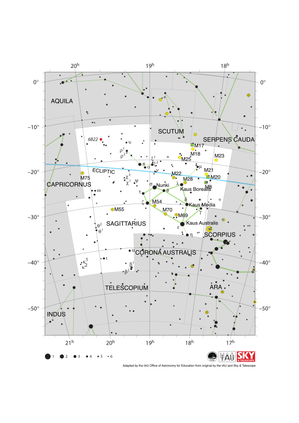Glossary term: Supermassive Black Hole
Description: As the term suggests supermassive black holes (SMBH) are the largest class of black holes, with masses ranging from millions to billions of times the mass of the Sun. Observational data suggests that all large galaxies seem to harbor a SMBH at their center. The Milky Way has a SMBH known as Sagittarius A* with a mass of around 4.5 million times that of the Sun, and a diameter of around 40 million kilometers. The large amount of mass in a small volume leads to black holes having immense gravitational fields (deep gravitational potential wells). Since 2019, scientists have used data from a network of radio telescopes located around the world to build an image of the event horizons around SMBHs. As of early 2023 two SMBHs have been imaged in this way: Sagittarius A* and the SMBH (6.5 billion times more massive than the Sun) at the center of the galaxy M87, located just over 50 million light years away.
Related Terms:
See this term in other languages
Term and definition status: This term and its definition have been approved by a research astronomer and a teacher
The OAE Multilingual Glossary is a project of the IAU Office of Astronomy for Education (OAE) in collaboration with the IAU Office of Astronomy Outreach (OAO). The terms and definitions were chosen, written and reviewed by a collective effort from the OAE, the OAE Centers and Nodes, the OAE National Astronomy Education Coordinators (NAECs) and other volunteers. You can find a full list of credits here. All glossary terms and their definitions are released under a Creative Commons CC BY-4.0 license and should be credited to "IAU OAE".
If you notice a factual error in this glossary definition then please get in touch.
Related Diagrams
Sagittarius Constellation Map
Credit: Adapted by the IAU Office of Astronomy for Education from the original by IAU/Sky & Telescope
License: CC-BY-4.0 Creative Commons Attribution 4.0 International (CC BY 4.0) icons
Virgo Constellation Map
Credit: Adapted by the IAU Office of Astronomy for Education from the original by IAU/Sky & Telescope
License: CC-BY-4.0 Creative Commons Attribution 4.0 International (CC BY 4.0) icons










